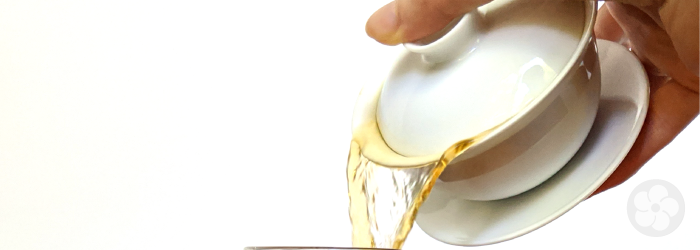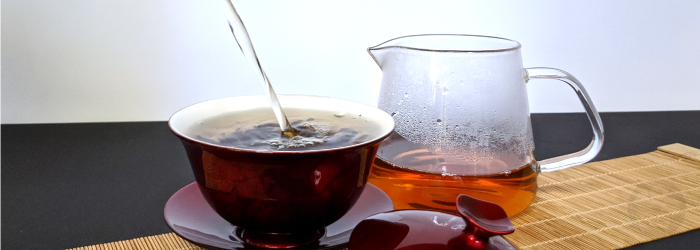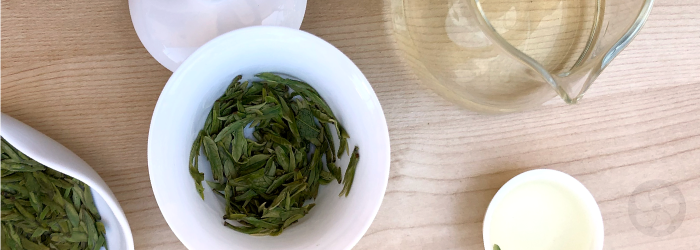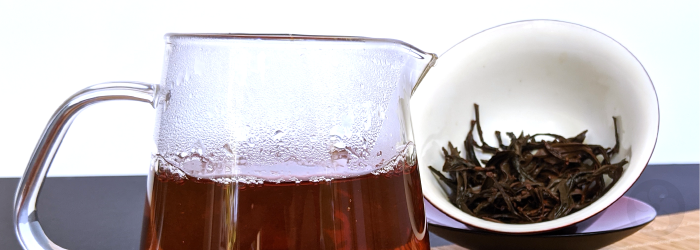4 Myths About Caffeine in Tea

Though most people consume caffeine in some form or another on a daily basis, myths and misinformation persist about the way it works. In particular, there are several popularly held misbeliefs about the caffeine content in tea that are simply not true. Some are based in fragments of truth, while others are pure invention. Today, we’re clarifying the facts about four caffeine myths that we encounter often.
Find all the details in our overview on caffeine in tea >>
1. Tea can be decaffeinated with a short rinse.
Once a widely held belief, this myth has now been thoroughly debunked by scientific research, but is still commonly claimed by some misinformed or unscrupulous sellers. As it is usually explained, there is a grain of sound science behind this story: caffeine is water soluble, which is how it ends up in a brewed cup of tea in the first place.

It is not, however, possible to extract the majority of the caffeine with an initial steep of 15 or 30 seconds. In fact, caffeine extraction is a function of time and temperature. Very hot water will draw caffeine out more quickly, while water at any temperature will draw out caffeine over a long steeping period. Research has shown that almost all teas deliver more caffeine after a five-minute infusion than after one or three minutes.
Learn more about how time and temperature affect your brew >>
Importantly though, most research does not take into account our usual practice of performing multiple infusions of the same leaves. Another study that measured caffeine in subsequent infusions found that the first brew does, indeed, contain the majority of the caffeine. By the third cup brewed of the same tea leaves, only a small fraction of the caffeine measured in the initial serving of dry leaves was released into the cup.
Learn how to brew multiple infusions with Alice in this video:
So while a short rinse is not sufficient to remove the majority of the caffeine in any tea, drinking later infusions will deliver much less caffeine than initial brews. And of course, three cups brewed from the same serving of whole leaves will deliver much less caffeine than three cups each brewed with a fresh tea bag.
Find out more about the difference between tea bags and loose tea leaves >>
2. White and green teas have less caffeine.
This commonly cited “fact” may have originated because of the lower water temperatures typically used to brew these types of teas, but it is completely false. Many studies have shown that there is no correlation between tea categories and caffeine content. Actually, green and white teas go through the fewest processing steps, leaving more caffeine molecules intact than in leaves that are more heavily oxidized or roasted.
Instead, caffeine levels in each particular tea are determined by a complex combination of factors during the growth process, including the amount of sun exposure and the plucking standard for each tea. Caffeine and other related compounds are believed to be natural defenses against pests, so levels in vulnerable leaves like the tender buds used to make high quality green and white teas are actually among the highest of any teas.
Learn more about which teas have the most caffeine >>
Much like flavor, caffeine levels are often erroneously associated with the color of the brew, and “strong” teas that are darker in color are expected to be more caffeinated. But this is a poor measure of both caffeine and flavor, and often misleading. Controlling the caffeine levels with lower water temperatures and shorter infusions is much easier than trying to determine which tea leaves contain less caffeine in dry form.

3. Tea contains more caffeine than coffee.
Of all the myths listed here, this is the one with the most basis in truth. In fact, most comparisons have measured more caffeine in a single dry tea leaf than in a single coffee bean. But differences between the ways in which the two products are processed and prepared make brewed coffee significantly more caffeinated than a cup of tea.
Find five reasons to try drinking tea instead of coffee >>
Most significantly, much more coffee is used per cup than tea leaf. While a standard cup of coffee is made with 10 grams or more of beans, most cups of tea use less than 5 grams of tea leaf. Already, the caffeine in a cup of coffee has surpassed the amount in the same quantity of brewed tea.

In addition, coffee is always finely ground to facilitate the extraction of flavor - and caffeine along with it. Whole tea leaves make a marked contrast, and release caffeine more slowly, as discussed above. While the broken leaves or dust found in common tea bags might give off caffeine more quickly, these are usually packaged in servings of approximately 2 grams, keeping the overall caffeine content low.
Learn more about the difference between whole and broken leaves >>
4. Decaffeinated teas contain absolutely no caffeine.
Since caffeine is a natural part of the tea leaf, it is impossible to remove completely. Actually, decaf teas are relatively rare and almost always more expensive than their quality would suggest, due to the cost of processing and the unavoidable effect on flavor when this integral compound is removed. Tea leaves are more delicate than coffee beans, which restricts the methods that can be used to remove caffeine.

By law, products labeled ‘decaf’ must have less than 3% of their original caffeine content, so the quantity that remains in most decaffeinated teas is considered negligible. But only herbal teas, known as tisanes, are completely caffeine free, because they are not made from the Camellia sinensis plant. Therefore, they naturally contain no caffeine.
Learn more about the difference between teas and tisanes with Alice in this video:
Ultimately, the range of teas is wide and varied, and the effects of growth and brewing processes make it hard to make any generalizations about caffeine. But these few myths are notably untrue, and understanding the truths behind them can help to make tea shopping a little easier, if caffeine is a concern.
Do you pay attention to the caffeine content of your tea? Let us know what you think in the comments below!
Sign up for our newsletter to get blog updates in your inbox!




Comments on this post (0)